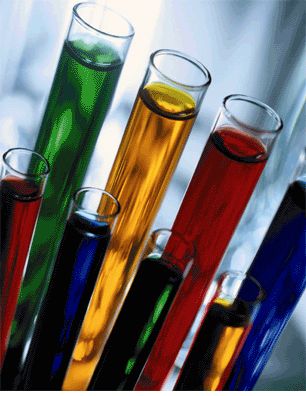 | « Back to article | Print this article |
 Chemical industry growth will be primarily driven by domestic consumption because per capita consumption of most of the chemicals is much lower than global averages.
Chemical industry growth will be primarily driven by domestic consumption because per capita consumption of most of the chemicals is much lower than global averages.
Current Status
The chemical industry in India is a key constituent of Indian economy, accounting for about 2.11% of the GDP.
India accounts for approximately 16% of the world production of dyestuff and dye intermediates, particularly for reactive acid and direct dyes.
India is currently the world’s third largest consumer of polymers and third largest producer of agrochemicals.
In terms of value and production volume, Indian chemical industry is the 3rd largest producer in Asia and 6th by output in the world.
Indian chemical industry could grow at 11% p.a. to reach size of $224 billion by 2017.
In 2015, India chemicals industry had a market size of $144 billion.
Value of India’s exports of inorganic chemicals have increased from $1.4 billion in FY14 to $0.70 billion in FY15, while the organic chemical market has reached $5.9 billion in FY15 from $12.04 billion in FY14.
India specialty chemical market is expected to reach $70 billion by 2020.
Industry Expectation
Presently, India is a huge net importer of ethanol with estimated production of around 245 crore litres against consumption of 325 crore liters (in 2014-15).
Even this does not convey the true extent of demand deficit, as some end users have stopped their consumption on economic grounds. Launch of 5% Ethanol Blending Programme with the requirement of 105 crore liters of ethanol has raised the demand.
This has further increased price of ethanol available to chemical industries. Due to the inadequate supplies of ethanol in the domestic market, Indian Chemical industry is forced to import ethanol. In the past five years, ethanol has been continuously imported and in the existing scenario, the chemical industry would be dependent on ethanol imports for its major requirement.
Methanol consumption in country is estimated at 1.8 – 2.0 million tonnes and is expected to reach 2.5 million tonnes by the end of the 12th five-year plan.
The current production capacity in the country is only 0.385 million tonnes/annum, thereby creating a significant gap which is met through imports, primarily from Middle East and China.
The downstream products of methanol are Acetic Acid, Formaldehyde, Di Methyl Ether, Methyl Tertiary Butyl Ether, Gasoline etc. which are major basic building blocks for majority of chemicals in India.
The removal of duty on methanol will surely boost the downstream industry in creating additional capacities.
Acetic acid is an important organic chemical and critical building block/raw material for various downstream industrial chemicals like ethyl acetate, acetic anhydride, poly vinyl acetate etc.
India is net exporter of these downstream products.
There is only one producer of acetic acid and no new capacity planned in near future, thus compelling the downstream producers to depend on imports and same is expected to continue in near future.
Indian import duty on PVC, at 7.5%, is still far lower than that prevailing in comparable economies.
This is resulting in very poor margins for domestic manufacturers, leading to a complete disinterest in capacity additions. For instance, the last Greenfield PVC plant was set up in 2009 and in the last 6 years, there has been no other significant investment in creating capacities.
Thus, India is even today excessively reliant on imports to meet its PVC demand, with demand expected to exceed 2.7 mnmt in the current financial year, while capacity is virtually stagnant at 1.4 mnmt.
The gap is likely to widen more and more in future years as demand is growing at a CAGR of 10% while no capacity additions are on the anvil.
Ortho-xylene is key feedstock used in the manufacture of Phthalic Anhydride. By this duty reduction, the Indian PA industry will consume more Ortho Xylene which is produced in India and is exported at lower realizations than what it fetches domestically in India.
Expect measures to build chemical clusters in line with plastic sector where related industries are set up in close proximity in an industrial estate so that they could be vertically integrated resulting in a saving on the transfer cost of feedstock and finished goods coupled with lower investment on infrastructure as a result of sharing
The government may establish a “Technology Up-gradation & Innovation Fund” (TUIF) that can address specific technology issues, faced by the chemical industry
Analysts Expectation
All the above demands from the Chemical Industry have been long standing and it is unlikely that they will find any mention in the Budget document.
Stock to watch
BASF; Clariant Chemicals; Godrej Industries; Aarti Industries
Outlook
Chemical industry growth will be primarily driven by domestic consumption because per capita consumption of most of the chemicals is much lower than global averages.
The government has been taking initiatives to address challenges in infrastructure, feedstock availability, complex tax and duty structure and overcome other system intricacies.
One of the initiatives is ‘Make in India’ campaign, which aims to facilitate investment, foster innovation, enhance skill development and build best-in-class manufacturing infrastructure.
Govt of India is focusing to raise the share of manufacturing in GDP from 16% in FY14 to 25% by 2022.
The image is used for representational purpose only